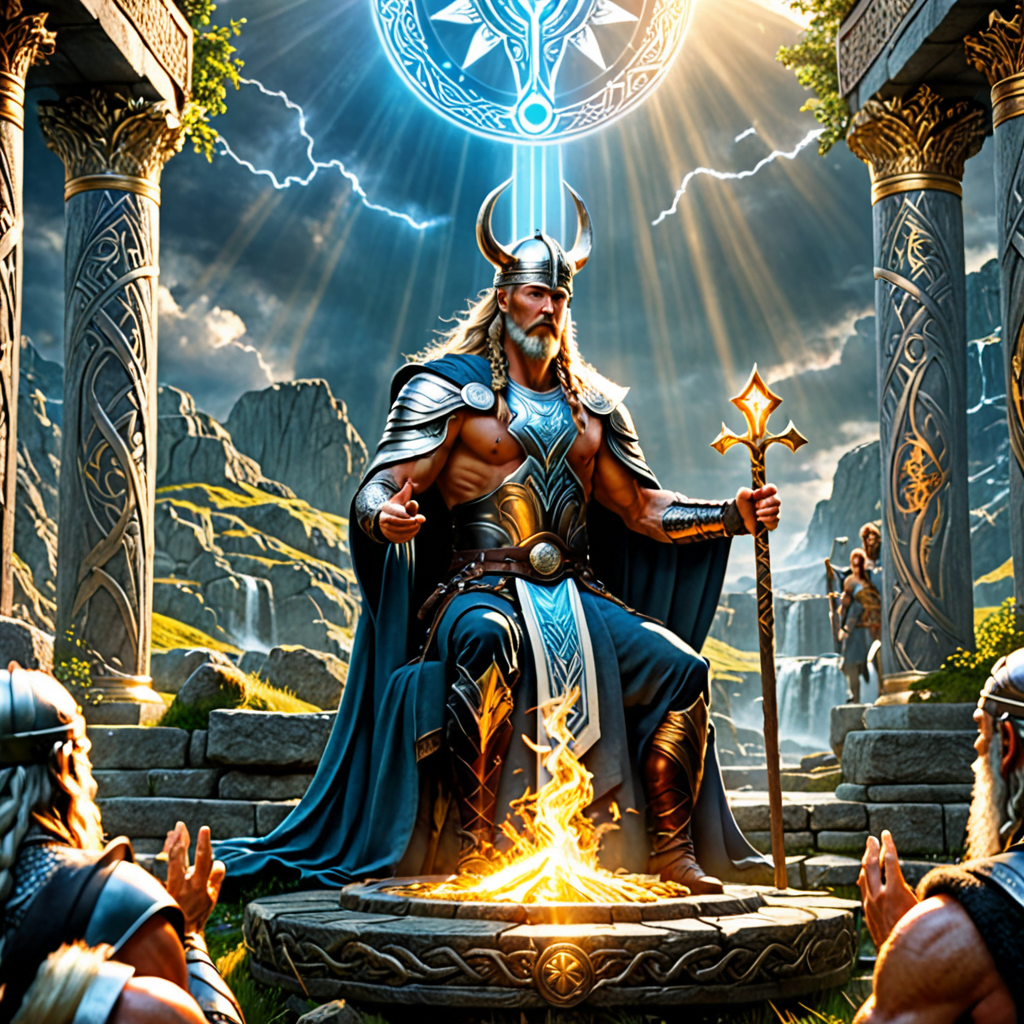The Role of Healing and Medicine in Norse Mythology
Norse mythology, with its rich tapestry of gods, goddesses, and epic tales, also delves into the realm of healing and medicine. Let’s explore the fascinating role that healing and medicine play in Norse mythology.
The Mythical Healers: Eir and Mengloth
In Norse mythology, two prominent figures stand out as healers – Eir and Mengloth. Eir is known as a goddess associated with medical skill and healing touch. She possesses deep knowledge of remedies, herbs, and healing techniques. Mengloth, on the other hand, is the goddess who rules over the medicinal garden in Jotunheim. She holds the key to powerful healing magic and is sought after for her healing prowess.
The Sacred Healing Practices: Runes and Seidr
Ancient Norse healers employed various mystical practices to aid in the process of healing. The use of runes, sacred symbols with magical properties, was prevalent in healing rituals. These symbols were believed to invoke healing energies and spiritual guidance. Additionally, Seidr, a form of Norse shamanism, was utilized for healing purposes. Seidr practitioners channelled energy and connected with the spiritual realm to bring about healing and restoration.
The Medicinal Marvel: The Mead of Poetry
One of the most renowned items in Norse mythology associated with healing is the Mead of Poetry. This magical mead is crafted from the blood of the wise being Kvasir and possesses the power to instill poetic inspiration and wisdom. It is said that consuming this mead can grant the gift of healing and rejuvenation, enhancing one’s creativity and insight.
Modern Interpretation and Relevance
While Norse mythology’s approach to healing and medicine is steeped in myth and legend, the themes of herbalism, spiritual healing, and the pursuit of knowledge continue to resonate in modern times. Elements of traditional Norse healing practices are sometimes incorporated into alternative medicine and holistic healing approaches today, highlighting the enduring significance of these ancient beliefs.
FAQ on The Role of Healing and Medicine in Norse Mythology
What was the significance of healing and medicine in Norse mythology?
In Norse mythology, healing and medicine were essential aspects of life. The Norse gods and goddesses often sought remedies to heal injuries, illnesses, and wounds, reflecting their concern for the well-being of their people.
Who were the prominent figures associated with healing in Norse mythology?
One notable figure associated with healing in Norse mythology was Eir, a goddess known for her skill in medicine and healing. Another important figure was the god Odin, who possessed great knowledge of magical healing practices.
How were healing and medicine portrayed in Norse mythological stories?
Healing and medicine were depicted as powerful forces in Norse mythological stories. For example, the goddess Idun was the guardian of the golden apples that granted eternal youth to the gods, emphasizing the rejuvenating aspect of healing in Norse mythology.
What role did healing play in the overall narrative of Norse mythology?
Healing played a crucial role in maintaining the balance of the cosmos in Norse mythology. The ability to cure ailments and injuries was not only a practical skill but also a symbol of divine intervention and restoration in times of need.





